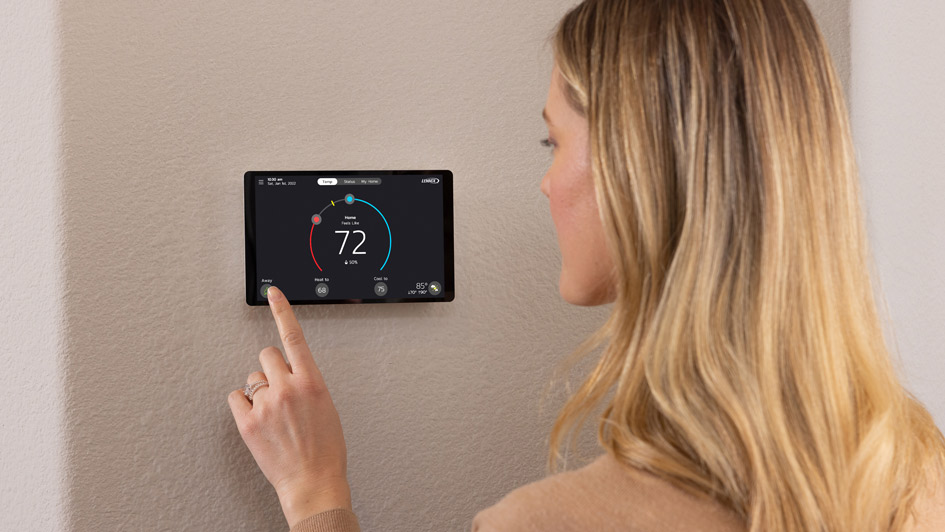
As Earth Day comes up, it's the right time of year to start thinking about how you can make your homes how you can work towards a more sustainable home. There are more options than ever, and having so many possible solutions ensures there’s one that matches your budget. Investing in eco-friendly HVAC not only benefits the environment but also contributes to cost savings and a more sustainable lifestyle.
1. Request a home energy audit
One of the first steps towards an eco-friendly HVAC system is to request a professional home energy audit. Over the course of an audit, local HVAC experts assess your home's energy usage and note any inefficiencies. They’ll take what they find and review things with you before recommending improvements. This detailed evaluation helps you understand precisely where energy is wasted and how our proposed improvements can provide lasting benefits.
2. Boosting Energy Efficiency Through Insulation
Having enough insulation is a crucial, and maybe underrated option for total comfort while also fine-tuning your home’s average energy use. Insulation functions kind of like a shield for your HVAC system, working to stop heat loss in the winter and holding cool air indoors during the summer.
Unfortunately, most homes don’t have enough insulation. Incorporating additional insulation to attics, walls, floors and basements is the usual strategy. Using high-quality insulation materials like fiberglass, spray foam or cellulose can dramatically enhance energy efficiency for lower heating and cooling costs.
3. Seal and Insulate Your Ductwork to Prevent Energy Loss
Damage to the home’s ductwork is a common, but hidden source of energy loss that can lead to reduced HVAC system efficiency, even with high-efficiency equipment. To address these losses and prevent any more wasted energy, homeowners should have a technician inspect ductwork for leaks and seal any openings as securely as possible.
Additionally, insulating the ductwork in spaces such as attics or crawl spaces helps prevent heat transfer into them. Sealing off these inefficient parts of your home is a great example of how a little effort can go a long way.
4. Investing in a Smart Thermostat
Opting for a programmable thermostat, and particularly a smart thermostat, enables homeowners to customize their heating and cooling schedules in line with their daily routines and preferences. By automatically adjusting these temperature settings in response to your usage habits, these thermostats improve energy costs and cut down on waste. Smart thermostats also provide benefits like remote access with your tablet or smartphone, or providing helpful notifications for things like maintenance.
5. Stay on Top of Routine HVAC Maintenance
In fact, regular HVAC maintenance is perhaps the most effective decision you can make for ideal system performance and energy efficiency. Homeowners should plan routine tune-ups with local professionals, who can perform inspections, filter changes, and other tasks to make sure their HVAC systems function seamlessly.
By addressing repair issues promptly and keeping internal clean,your technician will help safeguard your HVAC system and may even increase its life span.
6. Use Zoning Systems and Fan Settings for Better Ventilation
Zoning systems and fan settings provide homeowners greater control over their HVAC systems and indoor air quality. Zoning creates different areas of the home to be heated or cooled independently, improving comfort and energy usage. Meanwhile, even adjusting fan settings can help maintain consistent temperatures in your home while lessening the actual wear and tear on the HVAC system.
7. Think About Upgrading to a New, High-Efficiency HVAC System
For homeowners eager to upgrade, installing a new, high-efficiency HVAC system is highly recommended. The newest HVAC systems feature variable-speed motors, heat pump technology, and other innovations to provide superior performance while requiring less energy.
Desert Husky HVAC/R Services Can Help Your Home Be More Sustainable
Eager to make your home into an eco-friendly haven? Contact Desert Husky HVAC/R Services at 520-416-5415 to schedule a free consultation for eco-friendly home upgrades.
By implementing these HVAC tips, you can not only reduce your environmental impact but also enjoy a more comfortable and more efficient home. We’re proud to make the most of this year’s Earth Day creating a greener future, one household at a time.
